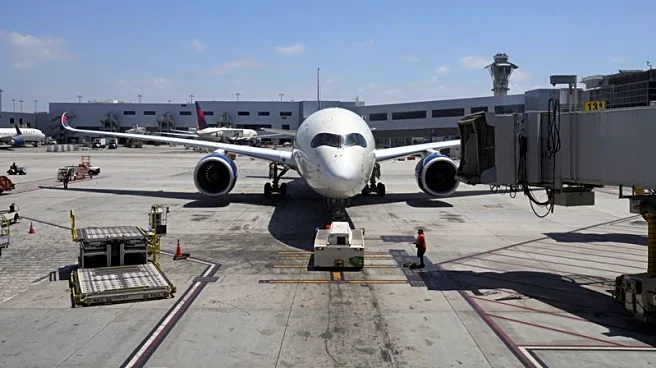What is the story about?
What's Happening?
The National Transportation Safety Board (NTSB) has released a report detailing a severe turbulence incident that occurred on a Delta Air Lines flight from Salt Lake City to Amsterdam on July 30. The aircraft encountered unexpected turbulence in a thunderstorm over Wyoming, resulting in injuries to passengers and crew. The turbulence lasted for 2.5 minutes, during which passengers experienced gravitational forces that threw them against the ceiling and floor. The flight was diverted to Minneapolis, where 24 individuals were evaluated by paramedics, and 18 were hospitalized. Two crew members sustained serious injuries, while five others had minor injuries. The NTSB is investigating whether the pilots and crew took adequate measures to avoid the storm and whether the decision to turn off the seat belt sign was appropriate.
Why It's Important?
This incident highlights the potential dangers of in-flight turbulence, which can lead to serious injuries despite being relatively rare. The NTSB's investigation may influence future aviation safety protocols, particularly regarding storm avoidance and seat belt policies. As climate change potentially increases turbulence frequency, airlines may need to adapt their safety measures to protect passengers and crew. The aviation industry, regulators, and passengers could be affected by any changes in safety standards resulting from this investigation.
What's Next?
The NTSB will continue its investigation to determine the adequacy of the pilots' actions and the decision-making process regarding the seat belt sign. The findings could lead to recommendations for changes in airline safety procedures. Airlines and regulatory bodies may need to reassess their protocols for dealing with severe weather conditions to prevent similar incidents in the future.
AI Generated Content
Do you find this article useful?

















